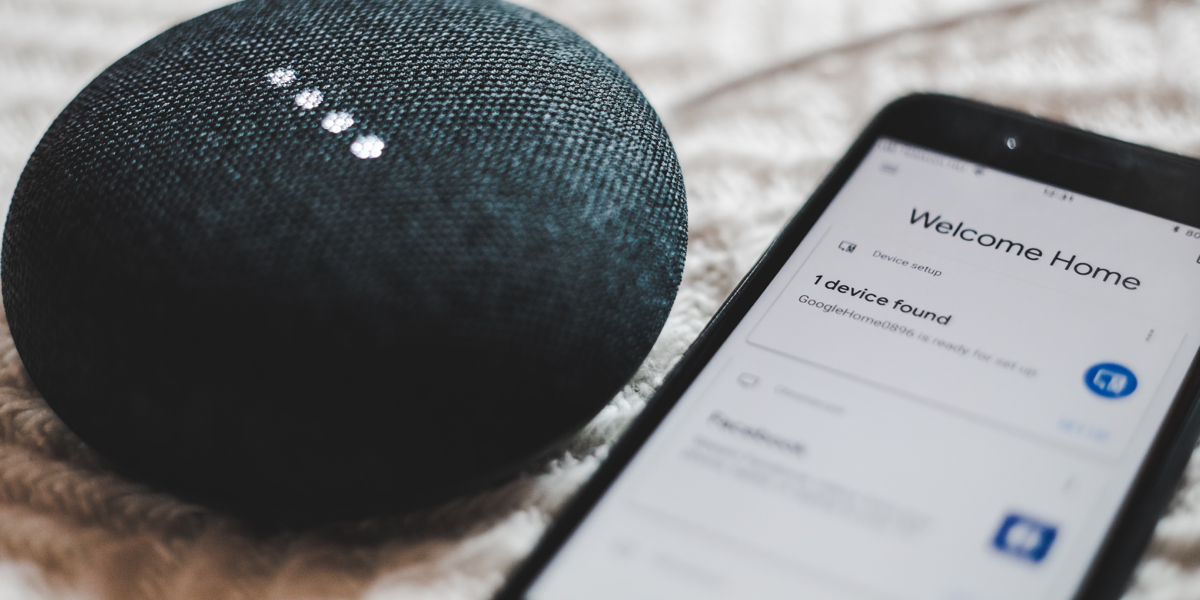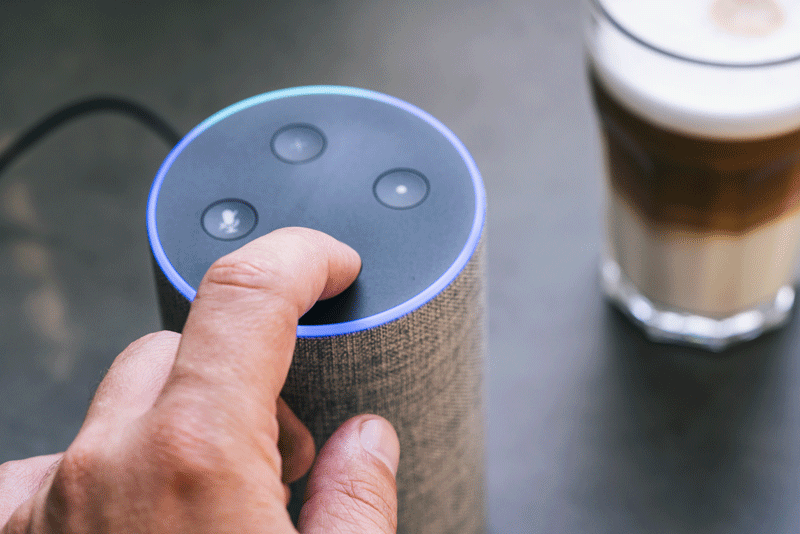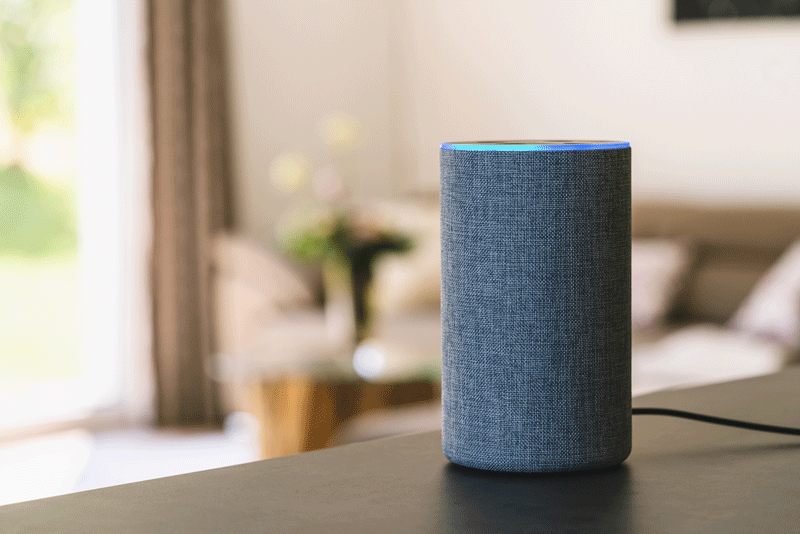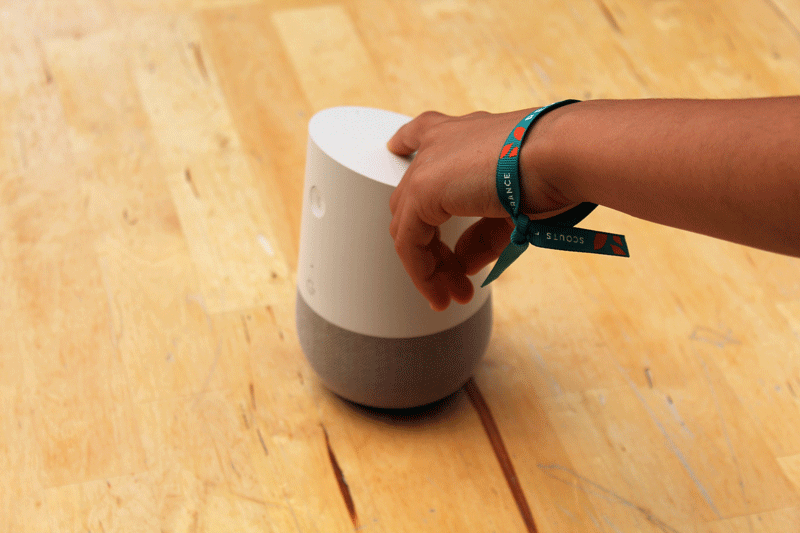Voice technology is currently one of the fastest-growing industries—making it an extremely exciting field to be a part of. As of January 2020, Voicebot found that 87.7 million U.S. adults were using smart speakers, and it’s predicted that the voice recognition market will be worth a whopping $24.9 billion in 2025.
Not only are people buying into voice technology; they’re using it, too! According to Google, 72% of those who own voice-activated speakers claim to use their device as part of their daily routines.
As voice technology becomes increasingly present in our day-to-day lives, it’s crucial to ensure that interacting with voice interfaces is a smooth, hassle-free experience. Perhaps you’re a designer looking to take on this challenge, or maybe you’re just curious about what a career in voice user interface (VUI) design might involve. In this guide, we will tell you everything you need to know about building a career as a voice user interface designer. With insights and advice from industry experts, we will cover:
- What is a voice user interface, and why is VUI design important?
- What does a VUI designer actually do?
- Are VUI designers in high demand?
- What does it take to become a VUI designer?
- What kind of companies are hiring VUI designers?
- How much could you earn as a VUI designer?
- What VUI courses are out there?
- Next steps
Let’s get started!
1. What is a voice user interface, and why is VUI design important?
Voice user interface (VUI) is speech recognition technology that facilitates interaction with a digital device primarily through voice commands. Some of the most popular VUIs include Apple’s Siri, Amazon’s Alexa, and Google’s Assistant.
Think about the way that you interact with the world around you. Generally, it’s through speech—giving instructions, having conversations, ordering food at a restaurant, and so on. In many ways, voice is the most straightforward and efficient way to interact with others. This is one reason why VUIs voice-first approach is so effective; it allows users to execute their day-to-day tasks faster and more intuitively.
Some of the tasks users can perform via smart speakers and VUI assistants include:
- Performing a web search
- Shopping
- Asking questions
- Calling numbers
- Setting alarms, timers, and reminders
- Getting real-time weather and traffic updates
VUI’s have made huge waves when it comes to accessibility. For individuals with vision impairments, VUI’s allow for a hands-free, eyes-free way in which users can interact with a product while focusing their attention elsewhere. This is also the case for those with physical disabilities or mobility problems (like elders or people recovering from accidents or surgery).
The devices have also been employed to help users suffering from depression, isolation, and loneliness. Some devices can spot signs from low mood, loneliness, and depression and provide the appropriate response. For extreme cases, they’re even able to recommend contacting the relevant authorities or organizations.

2. What does a VUI designer actually do?
The role of the voice designer is one that’s still being defined in our current market, much like that of a user experience designer. It goes by many different names, from voice user interface (VUI) designer and conversational user interface (CUI) designer to voice user experience designer, voice interaction designer, interaction designer, and so on. Some voice roles are simply folded into the user experience designer role.
In a nutshell, voice designers are responsible for designing and creating voice user interfaces. A voice user interface allows the user to interact with a system using their voice—for example, by saying “Ok Google, what’s the weather forecast for New York?”
Just like a UX designer focuses on creating a smooth interaction between, say, the user and their smartphone, a VUI designer considers the interaction between the user and a voice application. This interaction might be via a smart assistant built into the user’s smartphone, or a voice-activated speaker placed in the living room.
Voice design is similar to other design fields in that it focuses on creating a seamless user experience. In general, voice designers are tackling questions very similar to those faced by user experience designers, including who the persona for a product or service is, what problem is being solved, and how to implement designs that solve a clear user pain point. To answer these questions, they’ll fall back on processes you’ll recognize immediately from UX design: user research, persona creation, prototyping, user flow creation, usability testing, and iterative design.
However, voice interfaces are very different to graphical user interfaces. Voice designers must consider the complexities of working with voice, which offers new challenges in constructing user interfaces, navigation, and informational hierarchies. It also requires an understanding of how people respond emotionally to voice and to the characteristics of different voices, which involves fields such as psychology, sociology, data science, and linguistics. Voice designers working on a small team may go beyond creating sample dialogs and user flows to creating the complete script for a voice application, or rather, the complete set of things that can be said to a system and that a system can say back.
In this video, UX designer Jeff explains the voice design process for voice user interfaces.
User experience designers are often supported in building visual interfaces by user interface designers and developers, among others. Similarly, a voice designer is often supported by a large team of specialists. They might work with several types of developers who code the logic of the voice system. They may also work with specialists such as writers devoted to creating the phrases that the system can return to a user. Teams within companies designing their own voice recognition software may also include highly-specialized speech scientists who can apply statistical modeling to the sound waveforms being input into a system to make the voice recognition itself work. In a proprietary voice interface, the team may also include a voice actor, or actors, who record sound clips for the system.

3. Why are VUI designers in high demand?
As user adoption of voice devices increases, the demand for skilled VUI designers only grows. If voice technology is the future, then so are voice designers!
In order to gauge the demand for voice designers in today’s market, we asked some industry experts for their thoughts on the matter. Responses varied depending on location; however, the overall message was clear: growing popularity of voice devices equals growing demand for voice designers.
According to industry experts, here’s why voice designers are in high demand:
“Voice first” is taking off! The adoption rates of smart speakers since Alexa’s launch in 2014 have accelerated faster than those of the iPhone in 2007. Finally, we have the hardware and software that allow for delightful, verbal human-computer interactions.
It’s amazing to look at the progression of how humans have been able to interact with computers since they were invented. First we had binary coding, which paved the path for coding languages. Then graphic user interfaces were created and computers were made accessible to the general population via a mouse and keyboard.
Touchscreens rapidly made the interaction even more intuitive with taps and swipes. Even though the progression became more user-friendly, achieving proficiency at any of these modes of communication still requires some investment of time and effort on the part of the user. But spoken conversation — that’s something humans have been doing for thousands of years! Language is programmed into our DNA. Anyone who can converse competently in their native language—even someone who can’t read—can partake in a voice-first interaction.
This is a big deal especially for aging populations, kids, and as a way to augment accessibility for other channels, including mixed and virtual reality experiences.
Brielle Nickoloff, Witlingo, US
Voice user experience designers are in high demand for two reasons. First, the rapid adoption of smart speakers in particular and voice assistants more broadly has created a rush to establish a voice presence among many brands and media companies. Second, conversational design, specifically voice-first design, is very different from what we’ve done previously. It is an entirely new set of principles for user experience designers to learn and, as a result, anyone with experience in this space is highly valued.
Bret Kinsella,Voicebot.ai
VUI designers are in demand for a number of reasons. Smart speakers are selling faster than smartphones ever did. It took smartphones 3 years to reach 50 million users. It’s taken smart speakers 2.5 years. The forecasted growth in voice assistant adoption has led brands to seriously consider their future and how voice can play a role in that. At the same time, designing for voice is completely different to designing for a screen. Your screen doesn’t need a personality. Your screen has a confined, pre-determined menu and design best practice is well established. The contrast between voice and screen based design is stark, and VUI designers are in short supply. Whether there’s a large demand or simply a drastic shortage of supply is uncertain.
Kane Simms, VUX World, UK
Just look at the numbers. 252 MILLION U.S. adults use voice today! 90 million on their smartphones and 45 million on smart speakers. And the growth rate of the adoption is phenomenal. If it took around 10 years for mobile to conquer the world, it will take much less time for voice to do so. And the demand for good VUI designers in the industry is exploding.
Andrey Esaulov, CEO of SmartHouse Technologies UG & Co-founder of BotTalk.de
More and more companies are realizing that voice is a viable interface, and that people want to interact in a variety of ways. Smart speakers have proven that for some tasks, voice is an efficient, enjoyable way for people to get things done.
However, there are also a lot of bad voice experiences out there. When websites were first around, and anyone could build them, we saw a lot of flashing “under construction” GIFs and poorly organized content. Voice is in a similar stage: a lot of people plunge into creating them without understanding design principles, and then users get frustrated and adoption suffers.
Therefore there is a lot of demand for people who understand how to design GOOD voice experiences.
Cathy Pearl, Google, U.S.
Since voice-first devices are gaining more and more popularity (Amazon Echo devices have been the top seller on Black Friday for the past 3 years), there is also a trend in the rising demand for voice user interface designers. Since there is no best practice and “must-have track” when learning VUI design, it will be a great opportunity for anyone who wants to learn more about voice and be one of the first pioneers in this space.
Mario Johansson, Alexa skill developer, Austria
In VUI Design we don’t yet have an established material system on how to build digital experiences. This makes voice design a great field to innovate and experiment!
Kasia Ryniak, Upsidelab, Poland
I think voice is the most natural human interface, and now we’ve almost got a technology that allows us to talk to a machine. I guess we’ll have more and more voice-powered tech in the mid-term future (5-10 years). Therefore, there’ll be a massive need for people who can design how to interact with technology by using your voice.
Vasilii Shynkarenka, Invocable Prototyping Tool

4. What does it take to become a VUI designer?
We know that voice designers are in high demand, but what does it take to start a career in this burgeoning field?
Much like UX design, there’s no one set path to becoming a voice designer. While it’s important to master the necessary practical skills, there are no hard-and-fast rules when it comes to forging a career in voice design. To help give you an idea of whether a career in voice design is right for you, we once again sought the advice of some industry experts.
According to industry experts, here’s what it takes to become a VUI designer:
There is no one set path to becoming a voice user interface or conversation designer. I know people in the field who have come from all sorts of backgrounds: linguistics, computer science, music, psychology, cognitive science, and more. However, they have certain skills in common:
- A healthy curiosity and understanding of how humans communicate
- Knowledge of the technology and what the current limitations and constraints are
For someone looking to get into the field, I recommend reading up on the subject (such as Google’s design best practices, and my book, Designing Voice User Interfaces), listening to podcasts, following people on Twitter who are doing interesting work in the field, and watching talks.
I also recommend designing your own! You don’t have to be a coder; you can start by writing sample dialogs, which are basically a potential back-and-forth between the user and the system. Write them down, read them out loud, make changes, and repeat!
Cathy Pearl, Google, U.S.
To get started as a VUI Designer, you should ideally bring in first experience in UX design and basic knowledge of coding (e.g. NodeJS, Python, Java). Since there are already a lot of good (and free) tools and frameworks to assist you while developing voice-first experiences, the crucial part in voice design is in the conceptual and design phase. If you are new to voice and want to take a closer look into this new technology, you should ideally bring in: understanding of basic human communication (it can be handy if you came from marketing or sales), higher level technical knowledge, the ability to test concept flows and the enthusiasm to learn new things.
Mario Johansson, Alexa skill developer, Austria
Become a linguist, or better: a computer linguist. What steps do you need to take for this? Depends on where you are coming from. If you learned UX, forget all you learned, reset to factory settings and become a linguist. If you are a coder, learn to speak with your fellows.
Robert C. Mendez, Internet of Voice, Germany
What is really needed when becoming a voice user interface designer is the broad understanding of how people use voice while interacting with technology. It’s important to start with a mindset of designing a conversation, not a visible interface.
The biggest success factor in voice designer work is the ability to empathize with the users. To feel their pains, then get to know their real needs and discover the value voice can bring to their lives. Later on, it’s important to turn those findings into a digital journey that is intuitive and feels natural. And test it! Having a lean approach to designing voice interfaces is key.
Apart from understanding the major differences between designing graphic and vocal interfaces, it’s also important to understand the limitations of voice technologies nowadays. Voice platforms are growing quickly, but we as designers have to navigate many constraints. Staying up-to-date with the news is really important.
The best way to kick off a career as a VUI Designer is practicing skills on real-life examples. Pick an idea, design a simple conversation flow on a piece of paper, test it with your friend. And tell the world how you did!
Also, what is very helpful is becoming part of a community of voice designers. The best way to start is getting engaged in the meetups run by Alexa Devs, Google Assistant Experts or independent agencies and designers around. Those are the places where, by getting to know real use-cases, designers can learn and enhance their toolkit.
Kasia Ryniak, Upsidelab, Poland

First of all, you need to be interested in the brand new voice world. If you enjoy working with words rather than with pictures or numbers, you are on the right track. You need to be creative and enjoy realizing your own ideas. You don’t need to have any developer skills if you work on bigger projects or have a development co-worker.
Ralf Eggert, Alexa Champion, Travello GmbH, Germany
In terms of hard skills, copywriting is always a good skill to have, as are creative thinking, problem solving skills, the ability to translate complex information into simple concepts, understanding of user psychology and how people think and act. Understanding of the technology and how it works / what’s possible.
Useful soft skills include empathy, persistence, good teamwork, and good communication.
Kane Simms, VUX World, UK
To become a voice user interface designer requires you to reimagine and often break the visual patterns that we are used to. Instead of trying to reimplement those patterns in voice, one needs to go back to the actual problem they’re trying to solve. It’s what separates a good visual interface from the bad. The users will instantly feel comfortable when you try to solve their problem conversationally, instead of guiding them through the endless flow of voice wizards.
Andrey Esaulov, CEO of SmartHouse Technologies UG & Co-founder of BotTalk.de
I see the VUI designer first and foremost as a designer of conversations (between humans and machines), specifically specialized in voice interfaces.
I’m personally not exactly a conversational designer, but indeed I’m a software engineer (in relation to my professional experiences), nevertheless I’m a conversational AI advocate in general. In the market now, I see many different points of view/concepts regarding what a “Conversational (chatbot/VUI) Designer” is; on one hand, there are web front-end UI/UX designers and copywriters, that often conceive conversational (voice) design as a declination of a possible marketing/branding communication. One the other hand, there are software developers, approaching VUI with a strict engineering approach, by example considering conversation design just as workflow and task-completion processes. The “true” is in the middle. Both developers and copy authors own necessary competences. But these are not enough; the perfect conversational designer is, for me, just a “writer”, a script-player.
Giorgio Robino, Researcher, Designer, Developer in Conversational AI. At ITD-CNR, Italy

5. What kind of companies are hiring VUI designers?
If you’re thinking about pursuing a career in voice design, it’s important to consider the kinds of opportunities that might be open to you.
All kinds of companies from the old Interactive Voice Response (IVR) world and emerging new economy of VUI are already looking for designers with skills in this area.
Big brands like Amazon, IBM, Google, Microsoft, Samsung, Intel, and Nuance have many positions for VUI in different countries and languages. Car manufacturers like BMW, Daimler, Ford, Audi, VW and SEAT all implement voice control in their cars. Audio manufacturers such as BOSE, JBL, Sonos and many others have already launched products with VUI implementation.
There are many startups and voice platform creators; Adobe acquired one recently. There are some specialised voice agencies on the market, and many companies are interested in freelance UX designers with this specialty or as an additional skill.
According to industry experts, voice designers are likely to find employment in the following areas:
Agencies doing work on behalf of clients tend to be hiring voice designers. Although this is an area that more agencies are venturing into, not many have the demand to make it a full time thing. Lots of agencies are experimenting with voice on the side in the hope of growing it.
Brands building in-house teams also provide an area of opportunity for designers with VUI skills. Virgin in the UK are considering putting together an in-house team after working with an agency on their skill. The BBC have an in-house team consisting of 12 designers.
Software development companies and product companies that build voice tooling also need VUI designers. There’s obviously the likes of Amazon and Google that employ VUI designers to work on their assistants, but there’s also companies like Salesforce who are adding voice capability to their systems. Expect to see more of this.
Kane Simms, VUX World, UK
Big companies who have an inhouse department for their own voice projects, or agencies who work for other companies to realize their voice projects. The demand for VUI designers will grow in the next years.
Ralf Eggert, Alexa Champion, Travello GmbH, Germany
Because of the rising adoption, the profiles of the companies who need voice right now are very varied. Of course, the fortune 100 companies are at the forefront. They all learned the lessons of missing the mobile trend—they’re not making this mistake again.
Andrey Esaulov, CEO of SmartHouse Technologies UG & Co-founder of BotTalk.de
In Italy, some medium-large agencies, working mainly in customer care automation realms, are starting to look for VUI designers.
Giorgio Robino, Researcher, Designer, Developer in Conversational AI. At ITD-CNR, Italy
Amazon and Google. No kidding, they have more voice designers than everyone else combined. Media, retail, automotive—those are exciting industries.
Vasilii Shynkarenka, Invocable Prototyping Tool
Companies of all types are looking to hire conversation designers. Health care, retail, automotive, media—there will be conversational experiences in all of these domains. The terminology varies (some companies are building ‘chatbots’ for example, which typically refer to text-based conversations) but many of the skills are the same.
Cathy Pearl, Google, US
Regarding companies that are hiring VUI designers: The corporate companies would include Google, Amazon, Samsung, and Apple, in addition to AI companies like IPSoft ( https://www.ipsoft.com/amelia/) and security companies like Pindrop ( https://www.pindrop.com/) . Of course, banks like Chase and Bank of America have chatbots that will soon be turned into voice-based experiences as well. Then there are other smaller companies like Witlingo, Volley, Opearlo, and Bespoken that need VUI designers to either create experiences or help with UX research.
One company, called ChefSteps, was also recently hiring a VUI designer to help with their voice-driven kitchen appliances.
Brielle Nickoloff, Witlingo, U.S.
Networking within the VUI industry: How do you connect with peers and mentors in your field?
As with any industry, networking can prove key to getting a foot in the door. While on the topic of opportunities within the VUI field, we asked some of our experts how they go about making valuable industry connections. Brielle Nikoloff of Witlingo had the following advice:
“LinkedIn and Twitter. These are the two best-kept secrets out there, especially in design and tech. If you are looking for a job, looking for advice, wondering what it’s like to work at X company, looking for a new hire—you name it—develop your presence on both of these platforms.
If you are job-hunting, don’t just look through the job listings and submit resumes on LinkedIn. Seek out real people that are doing things that interest you and message them to ask for an informational interview via Skype or phone. Put your work and your art into the world, even if you don’t think it’s “done” or “ready”. Doing this is more inspiring and so much more powerful than submitting 200 cover letters and resumes into the void.”
Care and attention will get you a lot further than length in both of these, as you’ll learn in our UX cover letter guide.

6. How much could you earn as a VUI designer?
Finally we come to that all-important question of salary: As a VUI designer, what’s your earning potential?
The current data regarding salaries can be found on Glassdoor.com. In 2020, the national average salary for a VUI designer is $85,277. However, it can be tricky to pin down an accurate figure as most VUI designers will first learn UX and then complement it with VUI skills. This gives you a very broad range of possibilities across different companies, from high-profile brands to small startups and agencies.
To gain a better understanding of just how much designers with VUI skills can earn, we asked our industry experts to share what they know.
According to industry experts, this is the current salary outlook for VUI designers:
In Europe I see the salaries for VUI ranging from EUR 50k, all the way up to EUR 80K.
Andrey Esaulov, CEO of SmartHouse Technologies UG & Co-founder of BotTalk.de
It really depends on both the region and the designer’s knowledge. I would guess the salaries will be similar to other design fields.
Ralf Eggert, Alexa Champion, Travello GmbH, Germany
Seniors can earn $100k in the US.
Kane Simms, VUX World, UK
It really depends on the country and market. What is universal, though, is the fact that great VUI designers can bring tremendous value to the products and services being created. Hiring voice designers is an investment for the future and a bet on the development of digital world.
Kasia Ryniak, Upsidelab, Poland
Regarding salary for junior VUI designers: ($65,000-$80,000/ yr) Regarding salary for senior VUI designers: ($80,000-$110,000/ yr)
Brielle Nickoloff, Witlingo, US
Salary ranges for VUI Designers range from 65k for a junior level up to 135k for an advanced senior designer.
Mario Johansson, Alexa skill developer, Austria

7. What VUI courses are out there?
If you’re entirely new to the world of voice user interface design, you might want to consider looking into a course or bootcamp designed to teach you the fundamentals. Most good bootcamp courses will include real-world examples and case studies—meaning you’ll end the course with enough practical skills to see you start taking on projects in a professional capacity.
Let’s look at three of the best user interface design courses currently on the scene.
CareerFoundry Voice User Interface Design Course
Built in collaboration with the pioneering Amazon Alexa, CareerFoundry’s comprehensive online VUI course is perfect for UX/UI designers looking to update their skillset. You’ll work with a VUI expert as you work your way through the process of designing for voice user interfaces, from creating user/voice personas to usability testing. If you need to fit the course around your full-time job, worry not—the course is flexibly-paced, boasting an expert-authored curriculum built entirely in-house.
Udemy Introduction To Voice User Interface Design
If you’re looking to dip your toes into the basics of VUI before you commit to a more sizable investment, this introductory Udemy course is a great option. Taught by VUI instructor Jana, you’ll be guided through the fundamentals of designing conversations for chatbots and voice bots. With a three hour on-demand video, two articles, and practical assignments, you’ll implement your new-found skills as you progress through the material.
Designerrs Voice & Intelligence UI/UX Design Course
This 4-day bootcamp is intended for individuals who want to build an end to end a strong understanding of UX for voice-enabled interfaces. Taught by voice graduates working across a range of sectors, you’ll build out a portfolio project that will demonstrate a working understanding of fundamental VUI principles and methodologies—from tools and software for VUI to prototyping for voice-enabled devices.

8. Next steps
By now, you hopefully have a solid overview of the up-and-coming field of voice design. If you are completely new to the world of UX, you can start your journey into voice design by learning the fundamentals of user experience. If you already have the UX basics covered, you can move straight on to the skills and methods needed for designing voice user interfaces. If you’re curious about voice design, our free 5-day short course will give you a comprehensive introduction. Want to learn more about the voice revolution? Look no further:
